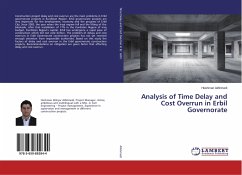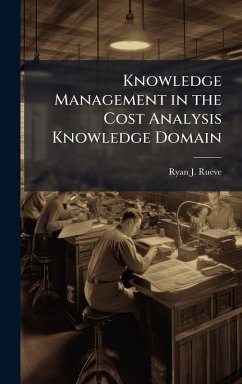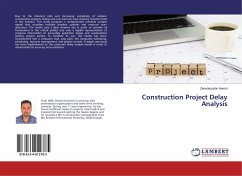
Cost-of-Delay Analysis
Versandkostenfrei!
Versandfertig in über 4 Wochen
28,99 €
inkl. MwSt.
Weitere Ausgaben:

PAYBACK Punkte
14 °P sammeln!
Cost-of-Delay Analysis (CoDA) is a method for creating tactical decision rules for program managers. Such decision rules aid project planning and provide a sound economic framework for making day-to-day project decisions. The method is both powerful and simple and can be taught to a group in 2-4 hours. Its results are easy to understand and apply. It is one part of an overall effort to reduce the time to develop and field defense systems within the Air Force and Department of Defense (DoD). This tool helps quantify the value of cycle time on specific projects and aids in making the trade-off d...
Cost-of-Delay Analysis (CoDA) is a method for creating tactical decision rules for program managers. Such decision rules aid project planning and provide a sound economic framework for making day-to-day project decisions. The method is both powerful and simple and can be taught to a group in 2-4 hours. Its results are easy to understand and apply. It is one part of an overall effort to reduce the time to develop and field defense systems within the Air Force and Department of Defense (DoD). This tool helps quantify the value of cycle time on specific projects and aids in making the trade-off decisions associated with production cost, schedule, system operating performance, and development expense. In 1999, the DoD adapted CoDA slightly from the method originally used by the commercial industry, specifically the work of Reinertsen (1983). This research will first confirm the continued need for such a tool in AF Acquisition, and determine how program offices are currently answering questions about where to best invest an additional amount of money on their program. This work has been selected by scholars as being culturally important, and is part of the knowledge base of civilization as we know it. This work was reproduced from the original artifact, and remains as true to the original work as possible. Therefore, you will see the original copyright references, library stamps (as most of these works have been housed in our most important libraries around the world), and other notations in the work. This work is in the public domain in the United States of America, and possibly other nations. Within the United States, you may freely copy and distribute this work, as no entity (individual or corporate) has a copyright on the body of the work. As a reproduction of a historical artifact, this work may contain missing or blurred pages, poor pictures, errant marks, etc. Scholars believe, and we concur, that this work is important enough to be preserved, reproduced, and made generally available to the public. We appreciate your support of the preservation process, and thank you for being an important part of keeping this knowledge alive and relevant.












